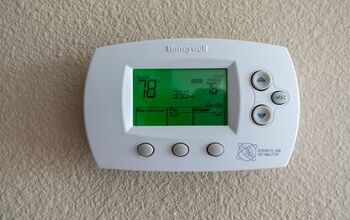How To Store A Boat In A Garage

It's not always easy for some people to say goodbye to their boat for the season, but that’s necessary in many climates. Many people would rather store their boat at home rather than spend thousands of dollars on a storage facility. However, you’re not alone if you’ve ever wondered how to store a boat in a garage.
You must carefully clean and dry your boat to remove pooling water from the compartments before storing it in a garage. Next, measure your boat, buy an appropriate rack, and clear enough space in the garage to fit the boat. Have someone spot you while you carefully back your boat into the garage, and use a hoist or dolly to mount it.
It’s worth investing in a ventilated boat cover to protect your boat from mold, mildew, dust, debris, and pests. Follow along as we explore how to safely store a boat in a garage.
Can You Store A Boat In Your Garage?
You can store a boat in your garage, and it’s a great idea. That’s because you can protect your boat from UV radiation, which can otherwise damage the surface and cause discoloration. A garage can also protect your boat from temperature fluctuations, rain, hail, snow, and ice.
Many people store their boat in their garage to save money on storage fees, which add up quickly. Boat storage costs vary based on the boat's size and location. Many boat storage facilities charge as much as $10 to $25 per foot per month, which can make storage expensive.
That’s especially true if you have a mid-to-large-sized boat, as storage can cost thousands of dollars for the season. It’s worth storing your boat in your garage if you can make enough space for it.
What Kind Of Boat Can You Store In A Garage?
You can store several types of boats in a garage, such as:
- Small fishing boat
- Dinghy
- Deck boat
- Small pontoons
- Kayak
- Gondola
- Bass boat
- Small sports boat
However, you can reasonably fit any other type of boat in your garage if there’s enough space. Keep in mind that there are different winterization processes for different types of boats. It’s up to you to do your homework and adequately prepare your boat for the winter.
Five Tips To Store Your Boat In A Garage
Storing a boat in a garage requires lots of care and patience. Some of the steps may not apply to you. For example, you don’t need to worry about preparing an engine or removing the battery if you have a paddleboat. Safely storing a boat in a garage only takes a few steps, such a:
1. Make Space In Your Garage
Making space is the hardest part of storing a boat in a garage. After all, many homeowners store plenty of miscellaneous items in their garages and can’t justify storing a boat in there. Such items, in addition to your car, may leave little space for a boat.
However, you can easily declutter your garage and make space for a boat if the area is big enough. First, you must measure your boat and see how much space you need to clear. Next, take inventory of everything in your garage and throw away or donate any unnecessary items.
If possible, move some items into your house to maximize space. Next, decide whether or not you want to hang or mount a boat rack in your garage. If so, you should mount and install the rack before you put the boat in your garage.
2. Remove The Battery (If Applicable)
Does your boat have a battery? If so, you must remove and store the battery before putting the boat in your garage. Otherwise, the battery may suffer damage due to inactivity and temperature fluctuations throughout the fall and winter.
The last thing you want to do is find the battery corroded when you pull the boat out for the season. Ideally, you should remove the battery and store it in a climate-controlled case, storage unit, or room in your house. Make sure the case is non-conductive to avoid damaging the battery.
3. Dry The Boat
If possible, you should let your boat dry in the sun for as long as you can. You must still dry hard-to-reach spots by hand, but sunlight and air can do a lot of the heavy lifting. Some people turn their boats upside down to empty the pooling water, but that won’t remove it all.
You can also put a pump on the boat’s floor and run it to remove pooling water. In some cases, you may need to use a wet/dry vacuum to remove water from the compartments. Otherwise, you may find mold and mildew in the compartments and other parts of the boat after it sits in your garage all winter.
It’s also a good idea to run a dehumidifier in the middle of the boat to pull moisture from stubborn crevices. Don’t put your boat in the garage until you’re confident that it is as dry as possible.
4. Put The Boat In Your Garage
Now it’s time to put your boat in the garage. This is easy if you’re simply handling a paddleboat, but it takes more work for motorboats. You can simply walk a paddleboat into your garage and mount it on the rack with a little help from a friend.
However, you must pull your car out of the garage and back the boat on a trailer hitch into the garage if you have a motorboat. In that case, you must have a spotter to ensure you don’t damage your garage or the boat. Use your mirrors and turn the wheel carefully as you back the boat into your garage.
Once inside, you must use a hoist, crane, or dolly to remove the boat and put it on the storage rack. It’s worth hiring help if you haven’t ever stored a boat by yourself before. After all, damaging your boat can lead to thousands of dollars in repairs.
5. Cover It
Seasoned boat owners will tell you that ventilated boat covers are the best option. Ventilated boat covers are essential, as they can protect your boat from mold and mildew. This is important in garages, which are often dark and have little airflow.
Garages are prone to mold, so you must do everything you can to protect your boat from it. Properly covering a boat can extend its lifespan and protect it from the sun, the elements, and moisture. You can find ventilated boat covers for roughly $200 to $600 or more, but it varies based on materials and size.
Otherwise, you can cover a paddleboat and kayak with simple tarps. They’re not as effective as ventilated covers, but tarps can protect boats from debris and pests.
Summing It Up
Before you store a boat in your garage, you must thoroughly dry it. Let it dry in the sun, then use your hands, a wet/dry vacuum, and a dehumidifier to dry the compartments and stubborn spots. Clear space in your garage, put the boat on a hitch, back it up toward the rack, and hoist it onto the rack to avoid damage.
Related Guides:

Nick Durante is a professional writer with a primary focus on home improvement. When he is not writing about home improvement or taking on projects around the house, he likes to read and create art. He is always looking towards the newest trends in home improvement.
More by Nick Durante



























